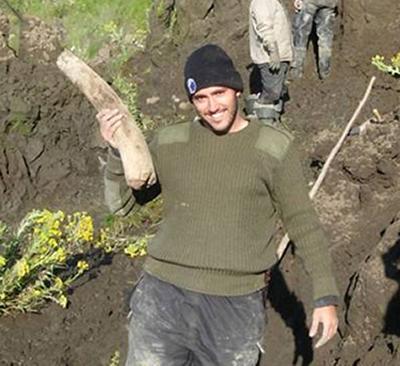Research gives new insight into diet of large ancient mammals

An international team of researchers, including Professor Mary Edwards at the University of Southampton, has used DNA testing to give a unique view of the diet of large mammals which roamed the northern hemisphere in the last ice-age.
The researchers, led by the University of Copenhagen, sequenced DNA taken from samples of frozen soils and the stomachs of creatures preserved in the permafrost of Siberia and Alaska-Yukon – an area many times the size of the UK. Their results show that around 25,000 years ago vegetation in this area was rich in ‘forbs’ – herbaceous flowering plants usually found in grasslands, meadows and tundra.
Professor Edwards, a physical geographer with expertise in permafrost deposits, says, “Permafrost is frozen soil and sediment which acts like a giant freezer, preserving countless plant and animal remains from ancient ecosystems. It is ideal for this kind of study because the DNA isn’t lost to the normal processes of decay.
“By analysing this preserved DNA, we have found that flowering plants, known as forbs, were far more prevalent than previously thought. In fact, forbs have been overlooked in many past studies of ice-age ecosystems, but this study shows they may have been a critical source of nutrition in the diet of mammalian megafauna – huge animals such as mammoth, woolly rhino, bison and horse.”
Until now, analyses of vegetation over the past 50,000 years has been based mainly on studying fossil pollen, showing that vegetation in cold environments, supporting large herbivores, was mainly made up of graminoids – plants such as grasses and sedges. However, this latest study gives a new perspective on this, suggesting instead a dominance of forbs, until at least around 10,000 years ago when woody plants and graminoids then become more prevalent.
Professor Edwards comments, “Analysing plant DNA has provided us with a unique perspective on this now extinct northern ecosystem and given new insights into how such large animals could survive extreme cold and harsh ice-age conditions.”
The findings, published in the scientific journal Nature, are the result of a large collaboration involving more than 30 groups from around the world. Molecular biologists from the University of Copenhagen, CRNS Grenoble, and the University of Oslo worked with experts on northern ecosystems at the University of Southampton (Professor Mary Edwards), Alberta in Canada and Tromso in Norway to interpret millions of DNA sequences in terms of the ice-age flora and develop an understanding of the composition of the forage and diets of megafaunal mammals.
The paper 'Fifty thousand years of arctic vegetation and megafauna diet' is published in the scientific journal Nature and can be found at: http://dx.doi.org/10.1038/nature12921
Here, Professor Mary Edwards describes the nature of the ice-age ecosystem that was the home of mammoths and woolly rhino, while study co-author University of Sussex Professor of Permafrost Science Julian Murton discusses the significance of permafrost sediments to Ice Age history and greenhouse gas emissions.